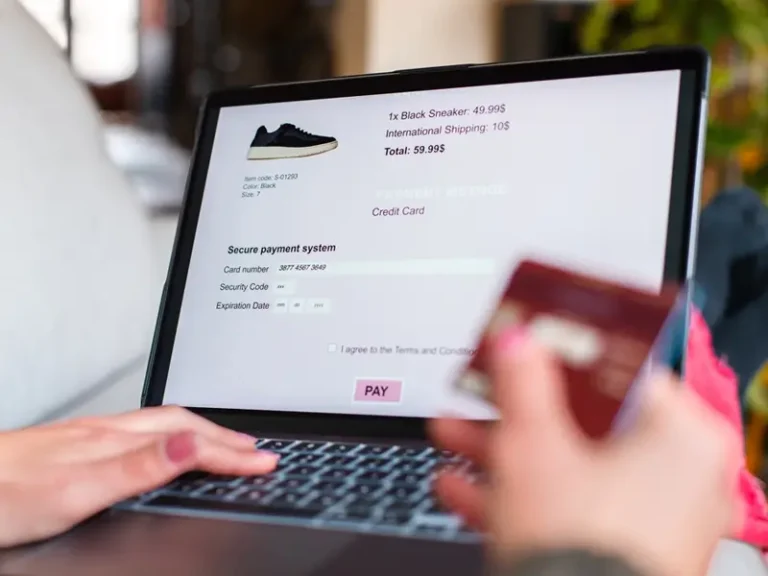This is part two of our series on localised checkout solutions. Be sure to read A Guide to Flexible and Localised Checkout and Payment Experiences and Enhanced International Ecommerce Solutions that Grow Global Business to get the complete picture and learn why worldwide ecommerce success hinges on the checkout experience.
In the first part of this series, we saw that localised checkouts benefit your customers by giving them the same experience they have with domestic ecommerce. This comfortable, recognisable experience builds confidence and trust and makes shoppers more likely to complete their purchases.
In part two, we’ll dive into the specifics of a localised checkout and explore the features that will boost conversion rates in every global market.
Elements and Features of a Localised Checkout

Building an ecommerce experience that’s relevant for shoppers in all your markets requires understanding and a 360-degree view of shoppers and their expectations.
1. Multi-Language Support
- Localised Language: From the start of your shopper’s journey to the all-important checkout and returns, every step must be in the local language. Translate product descriptions, user interfaces, checkout flows and customer service pages in the shoppers’ native languages.
- Context-Aware Translation: Ensure cultural nuances and product specifics are accurately translated and communicated. This includes making sure details like apparel sizing and market-specific terminology are localised. For example, if you’re selling winter clothing, you’d want to use the term “sweater” on your United States site and “jumper” on your UK site.
- Dynamic Language Switching: Allow users to change languages easily or auto-detect based on their location. Shoppers don’t want to have to guess how to access your site in their language. Make sure consumers see their local language from the time the homepage loads to the order confirmation page.
2. Currency and Payment Options
- Multi-Currency Display: Show prices in local currencies and keep them consistent throughout the shopping process. Shoppers don’t want to convert currencies. If you display local currencies, shoppers are more likely to complete their purchase because they know exactly how much they are paying.
- Localised Payment Methods: Offer country-specific payment options to accommodate local preferences. Shoppers in some countries prefer credit cards, while others prefer cash methods, and still others opt for digital wallets or buy now pay later. Knowing and offering preferred methods increases conversion rates.
- Transparent Fees: Surprise charges are one of the most common reasons shoppers abandon carts. Display all fees (e.g., taxes, duties, shipping, etc.) to ensure shoppers are fully informed of how much they are paying for their order.
3. Shipping and Delivery
- Global Shipping Options: Clearly state which countries you ship to and provide estimated delivery times. According to our annual Global Voices report, shipping times and costs are the top reasons shoppers do not buy cross-border. Consumers are more likely to complete checkout if you can be transparent and alleviate those concerns.
- Total Cost Transparency: Include duties and taxes in the checkout process or notify users if they need to pay them upon delivery. Every country is different and has different charges. You’ll want to be up to speed on all additional fees so you can be transparent with shoppers and prevent surprise charges.
- Order Tracking: Provide real-time, easy-to-access tracking information tailored to international carriers. Enabling order tracking puts the power in the shoppers’ hands and reduces where-is-my-order calls to your call centre, saving you money and reducing the time your customer service agents spend answering simple queries.
4. Website Performance and Accessibility
- Fast Loading Times: Optimise your site for lower bandwidth or slower internet speeds in certain regions. An ecommerce site that takes too long to load drives shoppers away and can damage your brand’s reputation.
- Responsive Design: Ensure the site adapts to all devices and screen sizes. Mobile shopping is quickly becoming the primary channel for online buying. Make sure shoppers can browse and buy easily from their mobile devices.
- Localised Hosting: Use a globally hosted technology architecture that auto-routes to the hosting closest to the customer. This improves site load times.
5. Cultural Considerations
- Localised Imagery: Use visuals that resonate with specific cultural or regional preferences. This includes being sensitive to religious customs and modesty requirements in certain countries.
- Holidays and Promotions: Tailor promotions to local holidays and shopping seasons, like Singles’ Day in China or Diwali in India.
- Product Fit Information: Provide region-specific sizing guides or measurements for apparel and other items. For non-apparel items like consumer electronics, make sure dimensions are in local systems (e.g. centimetres, inches, etc.)
6. Customer Support
- Localised Support Channels: Offer customer service in different languages via live chat, email or phone. In addition, train customer service representatives how to interact with shoppers in different cultures to avoid inadvertently offending a customer.
- Extended Support Hours: Cover time zones of key international markets and offer multiple support channels, including phone, email and live chat. Make sure customers can quickly get accurate answers to their questions in their language.
- Self-Service Options: Provide FAQs and troubleshooting guides tailored for international users. These FAQs should address questions that apply to both your brand in general and are specific to each country.
7. Returns and Refunds
- Clear Return Policy: Offer detailed international return and exchange policies, including who covers shipping costs. A flexible checkout lets you implement different return policies in different countries, but regardless of the details of your policy, you must clearly state what it is.
- Simplified Process: Partner with local carriers for return logistics to make the process smoother. Creating an easy and efficient returns process that speeds up appeasements is one of the best ways to win loyal customers. Consider omnichannel options like return to store for added convenience and an opportunity to build loyalty.
8. Trust and Security
- Regional Certifications: Display local security certifications (e.g., GDPR compliance in Europe) for credibility. Ensuring customers that their data is secure and your brand values privacy can reduce cart abandonment.
- Fraud Prevention: Implement fraud-detection tools and secure payment gateways tailored for international transactions. Preventing fraud is good for both you and your customers. You maintain healthier margins, while your shoppers feel secure knowing their financial information is safeguarded.
- Customer Reviews: Showcase testimonials and reviews from global users to build trust. Customer reviews not only tout the features and quality of your product but also demonstrate trustworthiness and build confidence.
9. Branded Checkout Flow
- Payments Page: You take steps to make sure the shopping experience is branded from the start. Carry your branding through into your checkout flow. This builds confidence and encourages conversions.
- Returns Portal: The returns experience (for those customers that need it) should also be branded. Shoppers want to know they are dealing with your brand even if you’ve enlisted a trusted third party.
Example of a Seamless International Shopping Experience
- A German shopper visits a US-based retailer’s website and sees the interface automatically switch to German, with prices displayed in euros.
- The shopper selects Klarna at checkout and sees all taxes and shipping fees included in the total cost.
- The site offers DHL as a trusted local delivery partner with tracking updates in German.
- After purchase, the shopper receives personalised follow-ups in German, including care tips and an easy return guide.
The Right Checkout Tools for Better Conversions
At the end of the day, the best checkout solution covers the entire shopping, purchase and post-purchase process. Localising the browsing experience, checkout flow, order tracking, customer service, and returns journey gives you a competitive edge because your international ecommerce experience is seamless.
If you’re ready to get started with a better solution in more markets, reach out. We’ll talk about what you want to achieve and how ESW can get you there quickly and with no capital expenditure. Don’t forget to check out part three of our series to see how you can grow your presence, customer base, and revenue worldwide.





